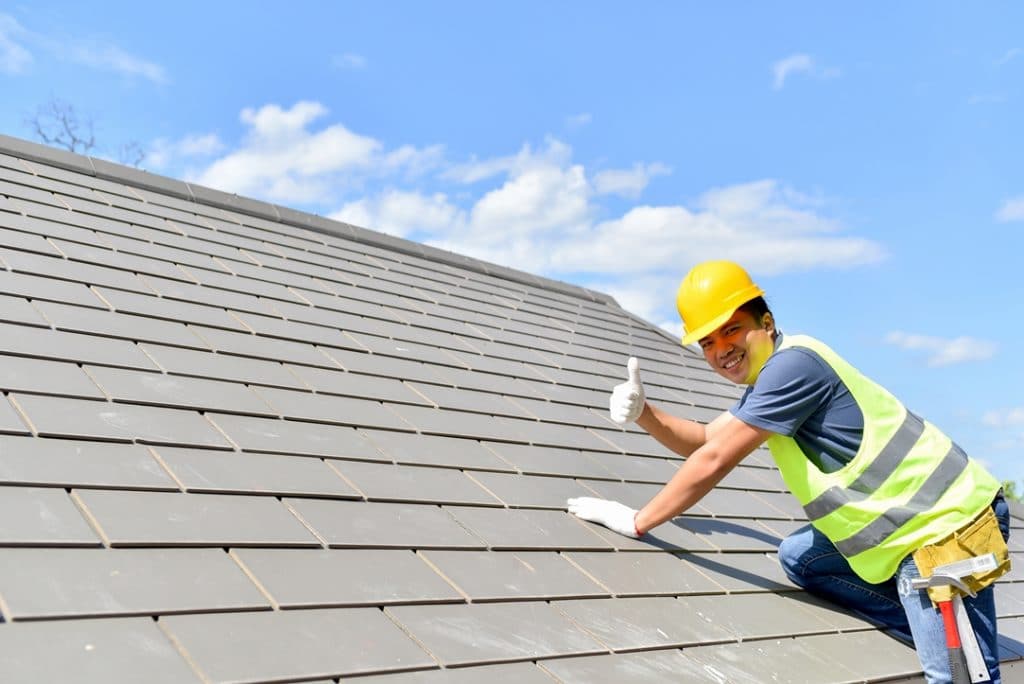When your roof is getting old, you might wonder about the harm of actually leaving it for a year or two until you’re better prepared to put a new roof on your house. This isn’t the best idea if your roof is old enough that it’s leaking. When you have leaks in your roof, water can get in the attic and even the ceiling of your upper level, and this can translate into thousands of dollars in damages. If you’re still not entirely certain about the costs of putting off replacing your roof just in case of water leak damages, let’s break it down a bit more.
Roof Structure
If you ever wonder what damage a leaking roof can cause, you’re not alone, but there are several ways that a leaking roof can damage other parts of your house. For instance, when moisture gets underneath the shingles, water will touch the trusses of the roof. Trusses on many house roofs are made of wood, which can expand when exposed to water. Typically, this wood has to be exposed to water for several months in order for it to start rotting because it’s naturally resistant to water, but long-term neglect can affect the structural integrity of your roof. These problems often occur when a homeowner finds that a roof is still leaking after a repair, but it’s also possible that the homeowner missed the leak for a long time.
Drywall Ceilings and Walls
Today, most homes are built with drywall, and you don’t want that to get wet because it can lead to mold, mildew, and other materials that can cause health concerns. Roof leak mold growth is a major concern for many people who have allergies and other pre-existing health concerns, but mold can make even otherwise healthy people sick and experience symptoms like headaches and breathing problems.
There are several places where a leaking roof can damage drywall, including ceilings and walls. As more water leaks onto the drywall, brown stains will form. You might also wonder, “Can a leaking ceiling collapse?” The answer is a simple yes, if the drywall is continuously wet over extended periods of time. Ceiling tiles can become flimsy, crumbling, and can even fall down. If you have significant water damage to your drywall, you might even need to employ a water remediation company to ensure that all the wet materials have dried out and all mold is gone.
Insulation
You might also have damage to your insulation if it gets wet. If it’s wet for long enough, it will even begin to get moldy and lose its ability to be a barrier to energy loss, so you will notice your heating and cooling bills rise. You’re most likely to notice damage to insulation in the ceilings, but over time, you can also have damage to the insulation in your walls because the water can trickle down through the walls. And if you think that fiberglass insulation won’t be damaged by water, think again. Fiberglass can retain water in its fibers, and the water droplets displace the air spaces, making the fiberglass lose its insulating properties.
Flooring
If you let the damage get past the highest ceiling, you’re going to have damage to your floors. Carpet can become moldy or filled with mildew, and wood floors can begin to rot if they’re exposed to water for long periods of time. The joists of floors can also become warped and damaged, and water can affect the subfloor. When you have floor damage, you might notice that it’s squishy underfoot, and you might even hear a water noise. Water can get underneath some types of ceramic tiles, but tile is also more likely to release the water quickly than wood wills going to. Laminate flooring doesn’t hold up well to water, and even vinyl and linoleum will need to be torn out if water gets underneath it. If you notice that water has gotten underneath your top flooring, remove it as soon as possible so that you have a better opportunity to save the subfloor.
Foundation
Foundation problems are also a possibility if water overflows the gutters and flows down into the foundation area. This can sometimes happen when there’s too much rain pouring down over a long period. Regardless of how and why the water begins to pool around the foundation, if there is damage to this part of your house, it can be pretty expensive to fix. You might see cracks in the concrete, and even more water might pour into your basement from the ground. Foundation damage can even lead to cracks and other types of damage in the walls and floors.
Wiring and Electrical Outlets
Water and electricity aren’t supposed to mix in your home, and if you have water leaking into your walls from a leak in the roof, water could get on the wiring and electrical outlets. If you notice that there are signs of water damage to your electrical system, you shouldn’t wait. If you let a damaged electrical outlet or wiring go without it being replaced, you risk an electrical fire even more than what you would normally be at risk of.
You might wonder, “How long can you leave a leaking roof?” The reality is that there are many causes of roof leaks, but regardless of the reason, you shouldn’t let roof leaks go untreated for long. When you think that you need someone who knows how to repair a roof leak or help with how to find a leak in a roof, click to call us. We’re professional roofers who are standing by, waiting for you to let us know how we can help you with your roof before it becomes a bigger problem than what you can handle.

